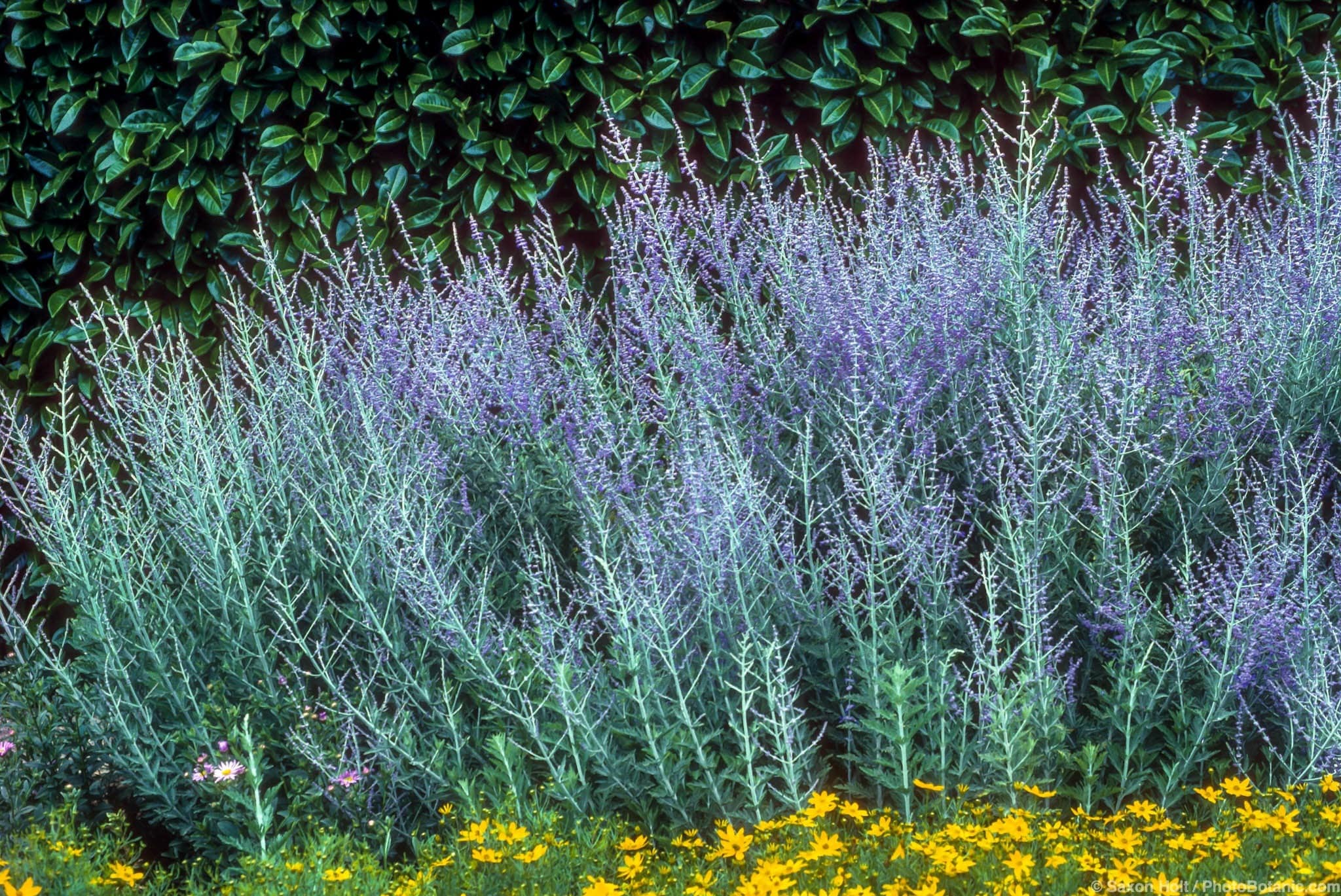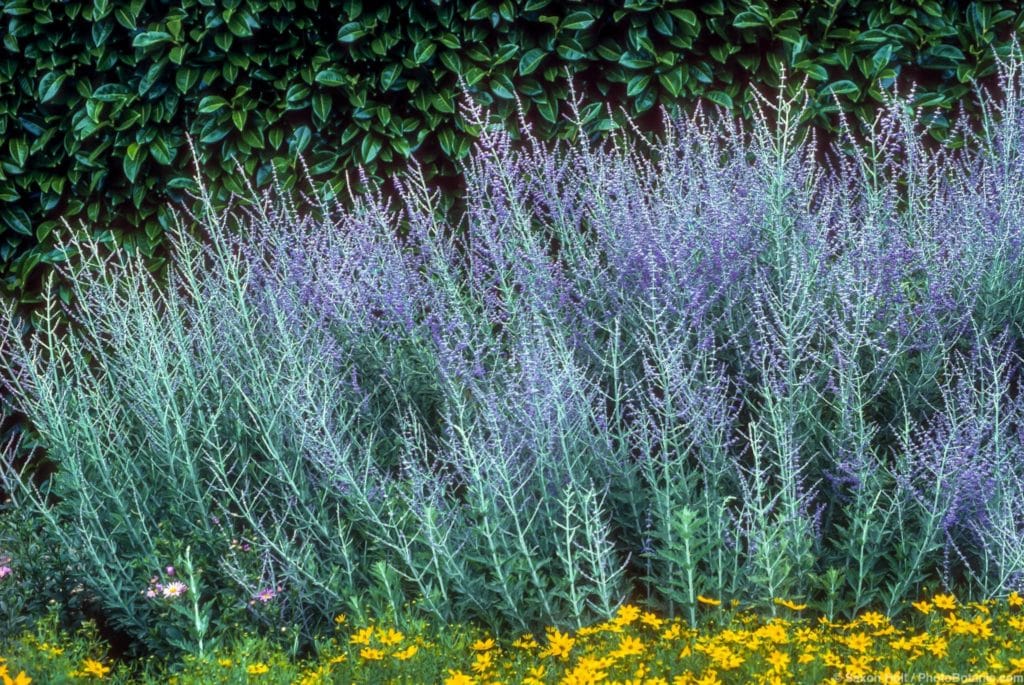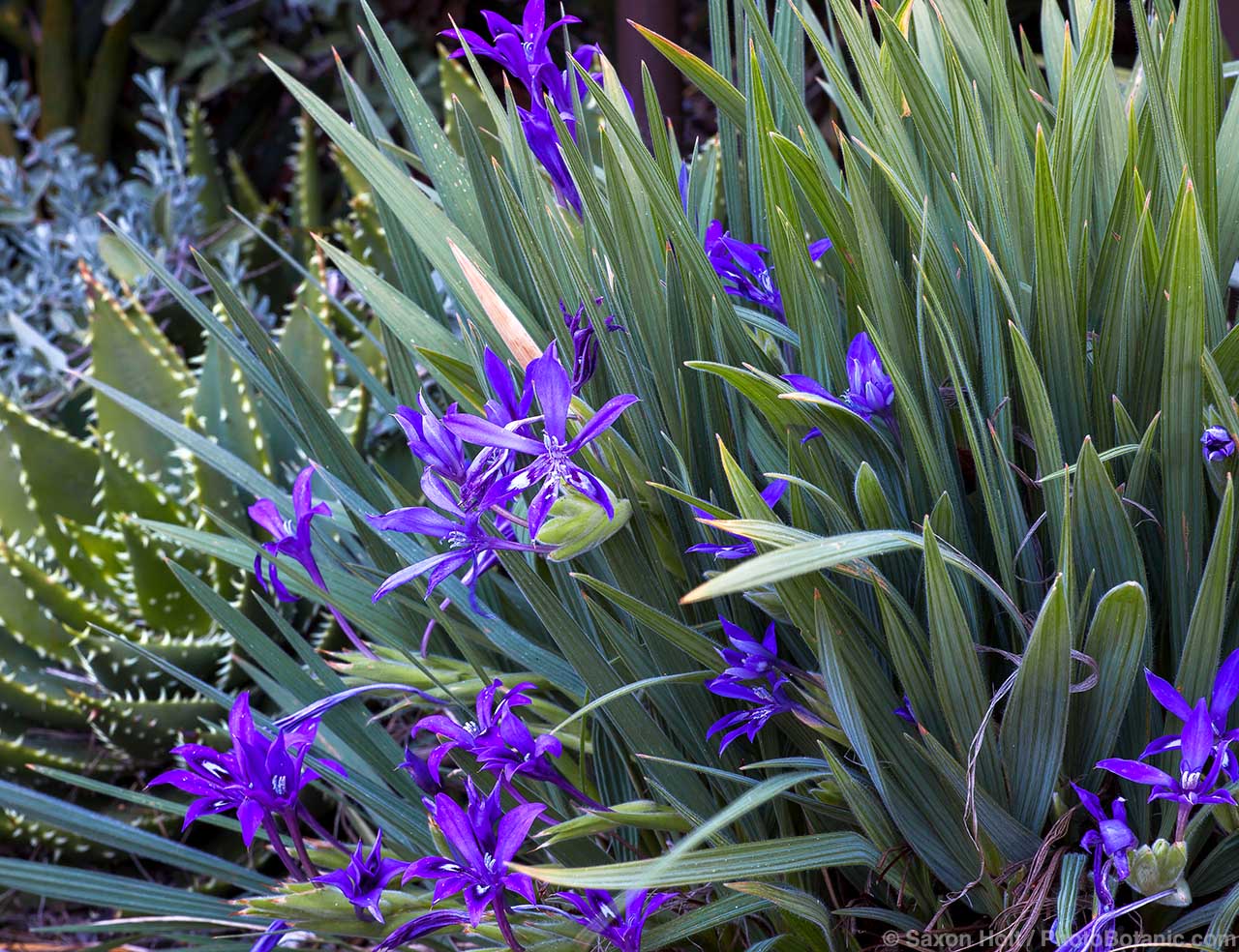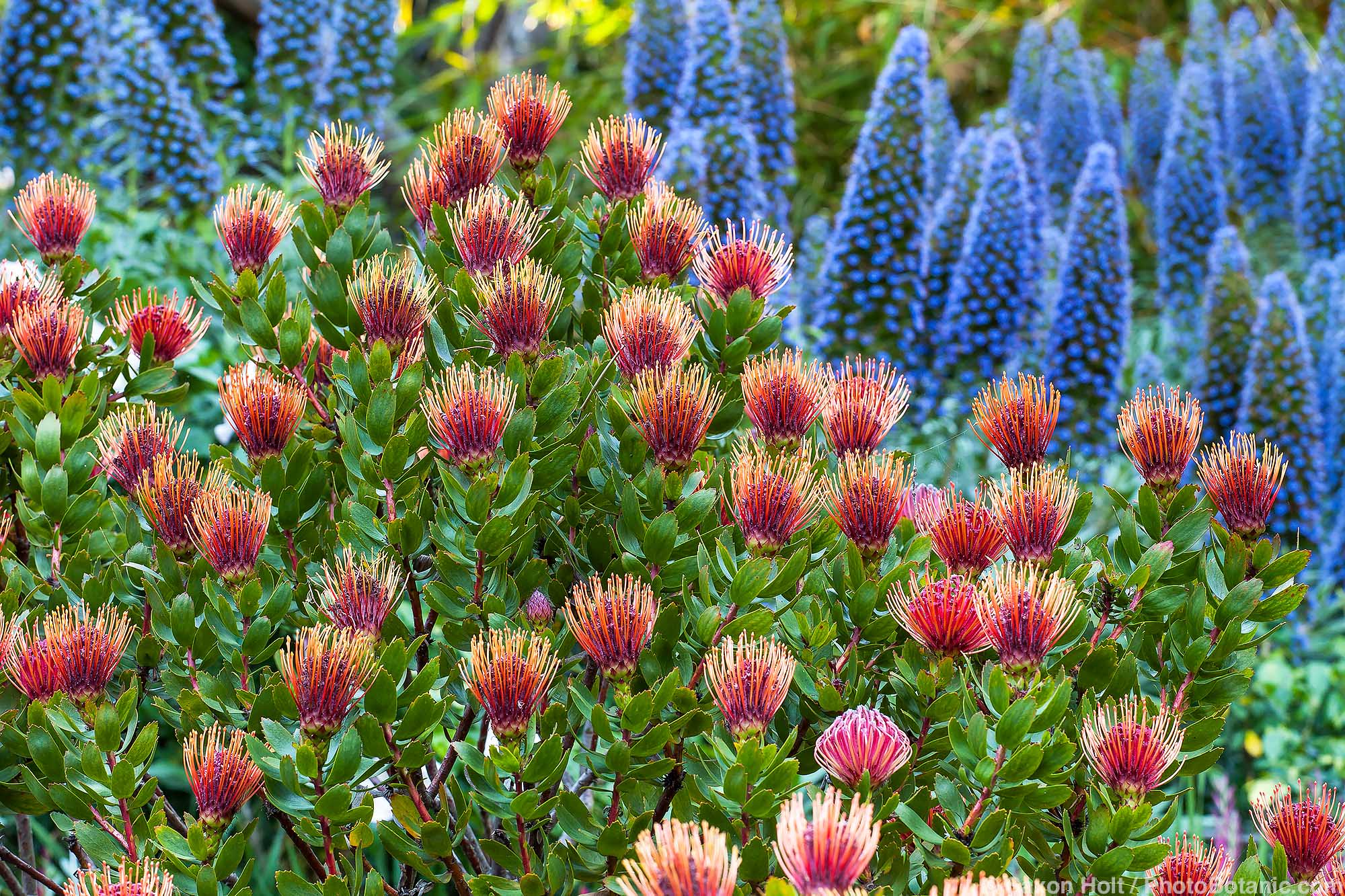Perovskia

Share This!

Perovskia atriplicifolia
Russian sage (Perovskia atriplicifolia) is a deciduous woody perennial or subshrub with strongly scented gray-green leaves, silvery gray mostly upright stems, and masses of tiny lavender-blue to deep blue flowers on tall spikes from summer through fall.
A fine-textured plant two or three feet tall and wide with an open, airy habit, perovskia is content in full sun with only occasional deep summer watering. It thrives in almost any soil type, including clay, but must have decent drainage; it sulks and rots where drainage is poor, especially in rainy winters.
Native to rocky steppes of southwestern and central Asia from Afghanistan to Tibet, perovskia accepts both heat and cold and is exceptionally long blooming. Flowers appear along with lavenders, sages, achilleas, and monkeyflowers, then continue on, to the great delight of bees and butterflies, long after most companion plants have settled into end-of-summer dormancy. In my garden plants are completely ignored by deer, undoubtedly because of the pungent fragrance of brushed, trampled, or nibbled leaves.

Perovskia atriplicifolia ‘Filigran’
Perovskia flowers only on new growth, so plants should be cut back before the next flowering season. Pruning is key to success with this otherwise easy and adaptable plant. If you don’t cut back, flowers will be sparse. If you cut back too little, plants may be lax and floppy. If you cut back too early, plants may die. It seems best to wait until new growth begins to appear in spring, then cut back to six inches or a foot above the ground.
Some seed-grown plants are said to sucker ferociously, gradually taking over large swaths of adjacent territory. While one could control rampant spread by chopping out suckers as they appear, it’s easier to plant only cultivars known for little suckering. ‘Blue Spires’ is a vigorous grower, to four feet tall and wide, with deep blue flowers. ‘Lacy Blue’ is compact, a foot and a half to two feet tall and wide, with lavender-blue flowers.
Share This!
Related Articles
By: Nora Harlow
By: Nora Harlow
By: Nora Harlow





